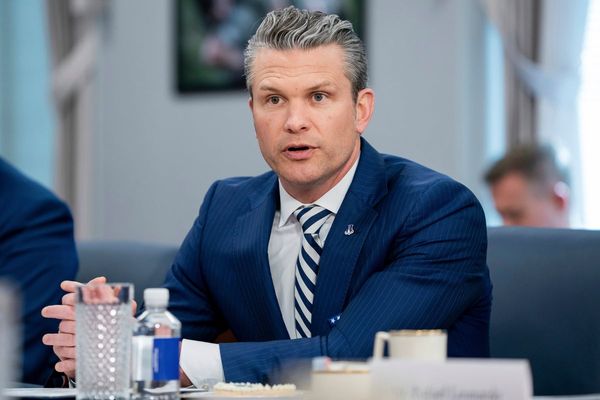New research has revealed the 53 London neighbourhoods which have gentrified most rapidly over the last decade.
The analysis, published by the Trust for London charity, found that areas across the East End, Southwark, Brent and Haringey saw the most extreme changes in average incomes between 2012 and 2020.
On average, the 53 areas identified in the research saw average incomes increase by 11 per cent, compared with a one per cent rise seen across the rest of London - after inflation is taken into account.
The largest jumps in income were seen in Spitalfields, which saw a 45 per cent rise in residents’ pay, Aldgate, with a 29 per cent increase, and Bethnal Green South, at 27 per cent. All three are found in the borough of Tower Hamlets, which was found to be the most gentrified borough as it contains 12 of the 53 neighbourhoods.
Other areas which saw large hikes in average income were Woodberry Down and Manor House (22 per cent) and Bruce Grove North (21 per cent).
The analysis was focused only on areas which in 2012 were found in the lowest 20 per cent of average incomes in London. Many of the areas in that lowest 20 per cent have not gentrified to the same extent, and are therefore not included in the 53 identified neighbourhoods.
In its research, produced in partnership with the WPI Economics consultancy, the Trust defined gentrification as “the influx of more affluent residents in lower income areas, relative to the residents that were already there, and the displacement of the previous population”.
The analysis found that in the 53 gentrified places, there was a “remarkable” decrease of almost two percentage points in the proportion of black people living in them, despite the fact that London’s black population remained essentially static between 2012 and 2020.
This equates to “around 10,000 black Londoners that we would see living in these 53 neighbourhoods if the proportion had stayed the same”, the research states.
Although the white population in the gentrified areas fell by a larger amount (more than four per cent), this was still a smaller fall than in the rest of London (about six per cent).
The 53 gentrified areas also saw increases (on average more than two per cent) in the proportion of couples without children. The analysis explains that “one of the biggest threats of gentrification is that it makes London so expensive families can no longer afford to raise children here”.
This trend has also been reflected in the decline of primary school applications in the capital, particularly in inner London, and in the recently confirmed closure of the maternity unit at the Royal Free Hospital in north London.
The research similarly identified an average fall of around five per cent in the number of households living in social-rented homes in the 53 gentrified areas, significantly more than the one per cent fall seen across the rest of London. The gentrified neighbourhoods also saw a rise in the number of people working in managerial positions.
Manny Hothi, the Trust’s chief executive said: “This research points to something that many Londoners have suspected for years - the city is becoming increasingly unaffordable for low-income families. We’re witnessing families and long-standing communities being priced out on a scale we haven’t seen before.
“London's diverse blend of communities is what makes it one of the best cities in the world. But the current trend shows the city is at a tipping point, at risk of being a homogenous place where only people above a certain income bracket can afford to be.
“If we want London to be a city where people from all backgrounds, of all ages, can live and thrive, urgent action is needed to address the affordability crisis.”
Guy Weir, head of data insights at WPI Economics, added: “Getting under the skin of local area data is key to understanding what’s happening beneath the headlines. As this analysis shows, several London neighbourhoods changed dramatically between 2012 and 2020, with the available data pointing towards a displacement of those on lower incomes.
“While the overall poverty rate has declined across the capital, analysis like this highlights that beneath the surface, communities across the city are struggling to afford to live in London.”
The list of 53 most gentrified areas, ordered by percentage increase in average income between 2012 and 2020, is as follows:
- Spitalfields
- Aldgate
- Bethnal Green South
- Woodberry Down & Manor House
- Bruce Grove North
- Camberwell Green
- Bethnal Green Central
- Beckton
- Bromley-by-Bow West
- Somers Town
- Beckton North
- Bromley-by-Bow East
- Finsbury Park West
- Manor Park North
- Grahame Park
- Stonebridge
- Loughborough Road
- Plaistow Park
- Woolwich South
- Peckham North
- Mile End West
- Peckham North West
- Limehouse North & Stepney East
- Tottenham Green East
- Mile End East & Burdett Estate
- Burgess Park
- University Hospital & Queen's Road
- Custom House
- Euston
- Poplar Leaside
- Turkey Street
- Tottenham Green West
- Harringay Warehouse District & Vartry
- Poplar West
- Roundwood Park
- Peckham Park Road
- Harlesden
- Plumstead High Street
- Tottenham Lea Valley
- Alperton East
- Welsh Harp
- Kilburn Park
- Anerley North & Penge West
- Roehampton North West
- Woolwich West
- Golborne & Swinbrook
- Burnt Oak & Watling Park
- St Mary Cray North
- Hayes End
- Whitechapel
- South Bermondsey East
- Leytonstone South West
- Dagnam Park & Noak Hill







